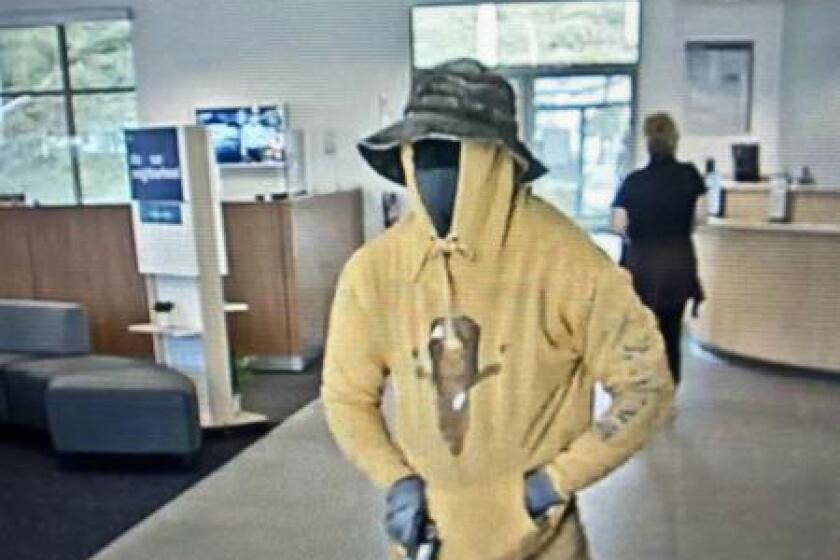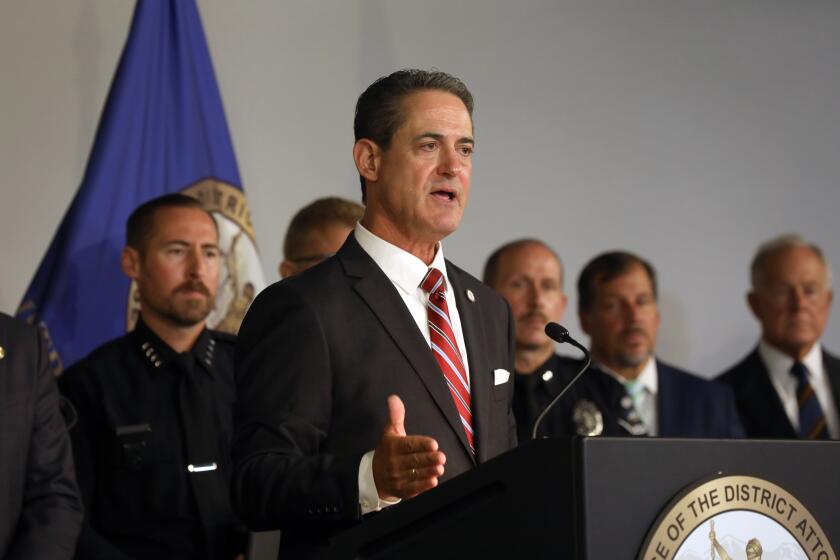City Should Invest in Visions of New Community-Based Leaders
Leadership and vision are often identified as prerequisites for great accomplishments. William Mulholland, for example, is said to have had great vision when he led the effort to develop the aqueduct system that brought water from Northern California to the Southland. Although many at the time argued that the cost was not worth the effort, most would agree today that the completion of the project has enabled Southern California to grow into one of the world’s strongest economic regions.
In a similar vein, former Mayor Tom Bradley had a vision of a major transportation system in Los Angeles consisting of a network of freeways, light rail and a subway. At the time, it was argued that for Los Angeles to be a world-class city, it would have to have a transportation system capable of meeting the economic needs of global as well as local institutions. Time will tell whether or not a regional transportation system can be developed that fully advances the economic position of Los Angeles the way the California Aqueduct did.
Both Bradley and Mulholland premised their visions of Los Angeles’ future on the notion that economic growth and development could occur only in conjunction with major public capital investment in local infrastructure.
That notion is being seriously challenged today. It is doubtful, for example, that Orange County will soon be in a position to make such investments. Los Angeles County is not in much better financial shape.
However, a growing group of community-based leaders is rapidly forming a vision for the region’s future that has a similar goal: improving economic conditions for all of the region’s residents. But it certainly employs very different means--with nowhere near the cost implication.
A recently released publication, “Visions for the Future of Metropolitan Los Angeles,” provides a perspective on the future of the area that is worthy of discussion among elected officials, business executives, members of the media and other opinion makers. This small document, produced as a part of the Urban Leadership for the 21st Century program sponsored by the W.K. Kellogg Foundation, highlights the efforts of some 26 diverse leaders who have been working to solve urban problems at the community level throughout the basin.
One of the early premises of the program was that the capabilities of a city’s neighborhood leaders and the fate of America’s cities themselves are inextricably linked. In large urban areas such as Los Angeles--where urban problems have reached exaggerated proportions--the authors conclude that top-down solutions have had limited success, leaving the public preoccupied with failure and urban decline.
“There exists a wealth of innovative, grass-roots solutions to urban problems across Los Angeles and other major urban areas,” says Elwood Hopkins, director of the Los Angeles Mega-Cities Project and primary author of the Visions report. The problem, however, is that they tend to remain small in scale, because the leaders responsible for them are isolated, unrecognized and frustrated. They lack access to power, resources and people who can help them achieve a “multiplier effect,” boosting the leaders’ impact.
After three years of seeking innovative solutions at the grass-roots level and developing a leadership network in Los Angeles, the Mega-Cities Project has designed a system to enable innovative neighborhood leaders across metropolitan Los Angeles to replicate their approaches in other neighborhoods, expand them to serve a larger area, share them with peers in other cities or incorporate them into public policy.
What sorts of ideas are these leaders germinating?
Consider the vision of Kay Inaba, founder of Quality Workforce Development Plus, a neighborhood-based social and economic development initiative in the Pacoima-Sylmar area of the San Fernando Valley.
“Because the world is changing so rapidly, there is not enough time to innovate in a series fashion,” Inaba says. “In order to expand our impact, we need to find like-minded individuals who are willing to work together, develop the concepts, and build on each other’s success. We need win-win partnerships with leaders from other sectors and other communities in order to get further in our plan.”
Inaba’s organization has initiated a program to develop a quality work force that brings together the schools that teach skills to students, the companies that will employ them and the nonprofits that provide additional training and social support services.
Another emerging leader is Lois Arkin, director of Eco-Village. This Los Angeles-based group is working to rehabilitate existing housing stock with environmentally responsible materials. It also aims to reorganize traffic patterns to include bike paths and to establish a local, community-owned, electric minivan service providing connector service to Metrorail and the Blue Line. For Arkin, “scaling up means sharing what we’ve learned with other neighborhoods that want to begin their own paths toward a sustainable future. Doing that kind of sharing close to home conserves energy and allows for an easier confederation of sustainable neighborhoods.”
The Los Angeles of the future envisioned by all of the leaders profiled in the Visions booklet seeks to make Los Angeles the type of thriving environment that a number of our leaders have been advocating. The public price tag is one we could well afford--if only there were leadership calling for the type of investment in community-based organizations advocated by some of the city’s most innovative grass-roots leaders.
Copies of “Visions for the Future of Metropolitan Los Angeles” can be purchased for $10 each from the Los Angeles Mega-Cities Project, 1728 Silver Lake Blvd., Los Angeles, CA 90026.
More to Read
Sign up for Essential California
The most important California stories and recommendations in your inbox every morning.
You may occasionally receive promotional content from the Los Angeles Times.










